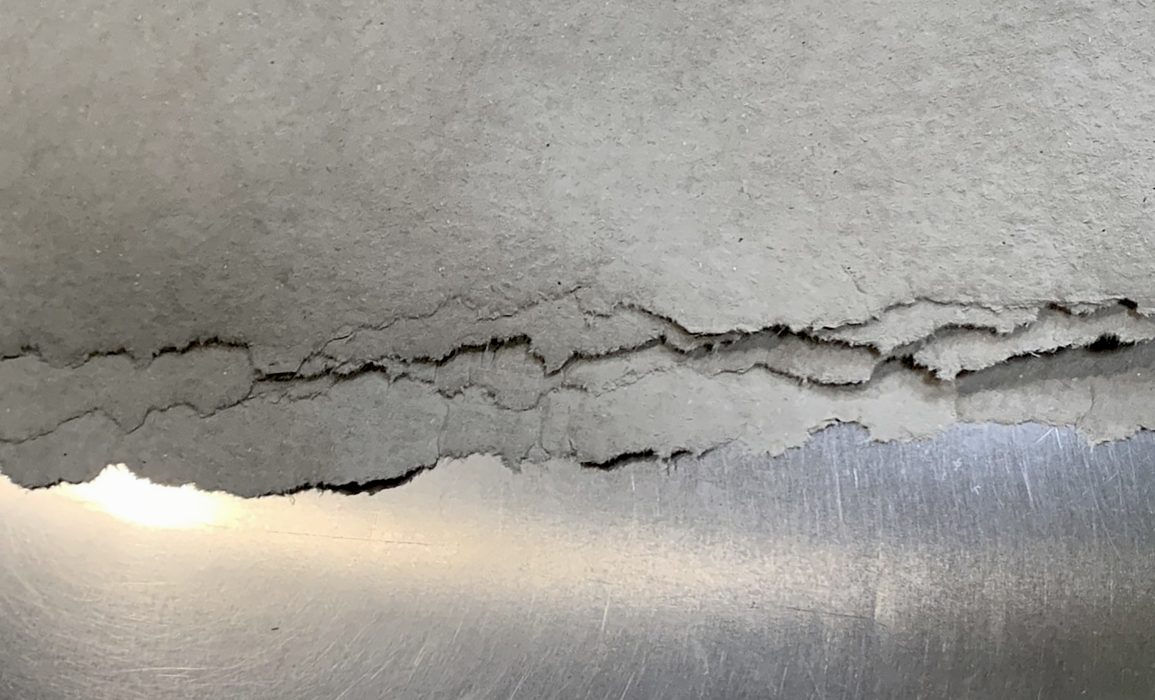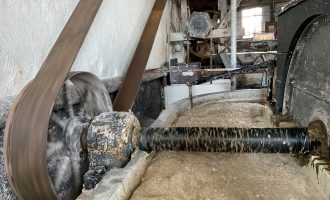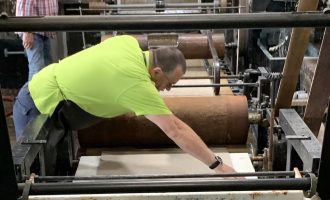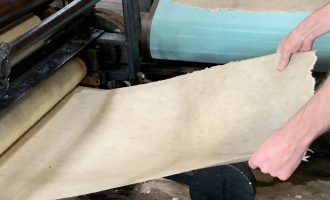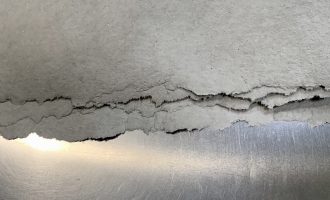paper-making at paper mill de middelste molen, loenen
Besides the long, fine fibre used for textiles, there are numerous applications for the remaining plant matter gathered during flax processing. On May 25 2022, a handful of the Linen Stewards experienced the pleasure and effort involved in paper-making at paper mill De Middelste Molen in Loenen, using the shorter flax fibres (‘hackling tow’ or ‘het werk’) from their 2020 and 2021 harvests. In preparation for processing into paper, the fibres were cut even shorter by helping hands, including 25 volunteers, organised by Linnen Steward and paper-maker Loes Schepens. As with textile applications, the smoothness of flax fibres means they require specific handling in order to fuse adequately. The Linen Stewards’ flax was mixed with a percentage of wood pulp at the mill to achieve the desired consistency for processing. In this case, 26 kg flax fibre and 10kg birch pulp. For both the Linen Stewards and the paper-makers at De Middelste Molen, much was learned during this experiment, problem solving together to achieve a final paper result that all involved were satisfied with: ‘raw, monumental and sensitive’.
Originally founded on the Loenense Molenbeek in 1622, today paper mill De Middelste Molen
is the only one of its kind in the Netherlands still operating on hydropower and steam to manufacture paper using various materials.
Photos courtesy of Loes Schepens
-
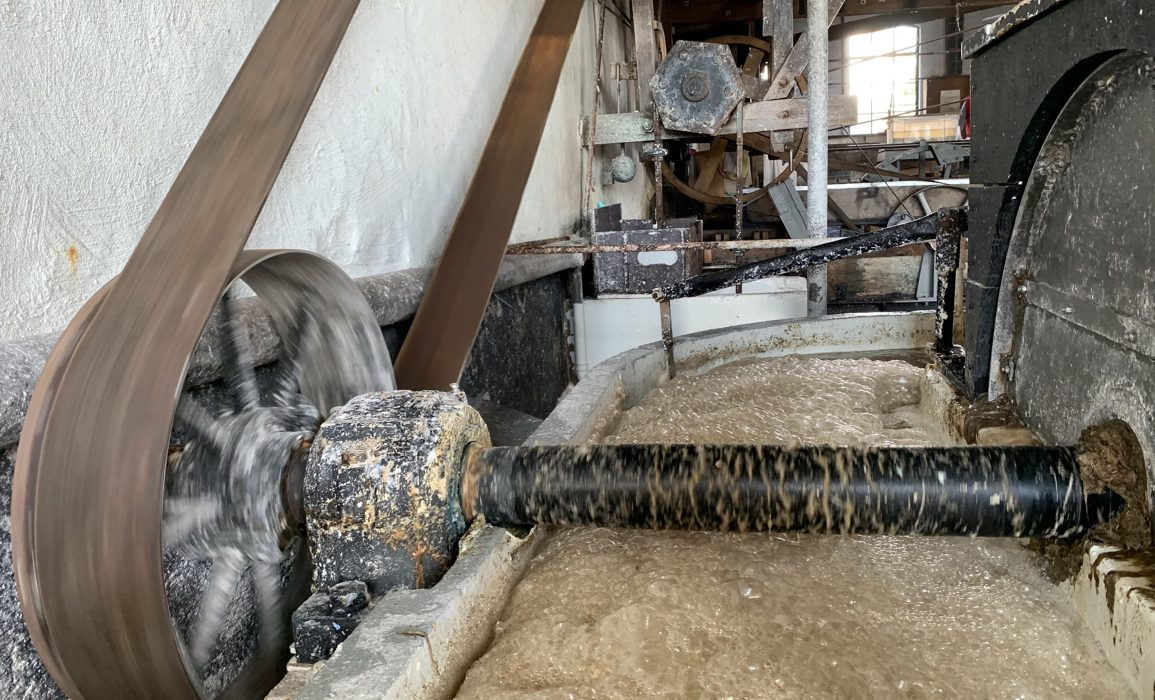
preparation of the flax and birch pulp in the Hollander beater
-
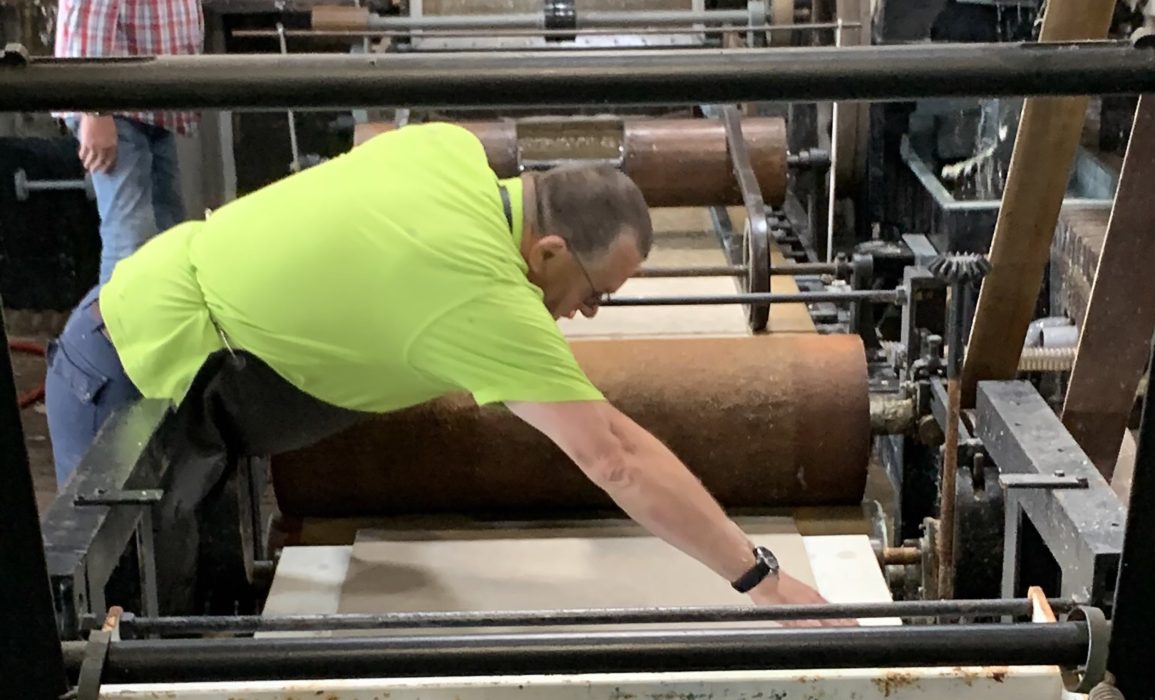
pressing the flaxpaper
-
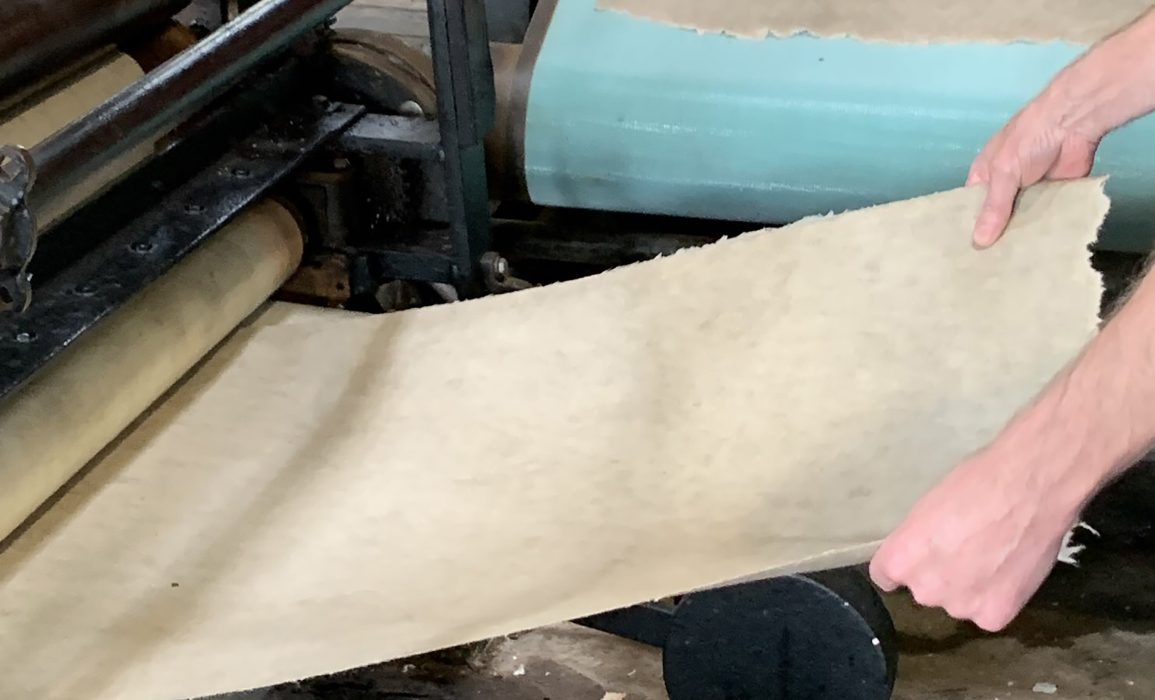
removing the pressed paper, making it ready to dry
-
